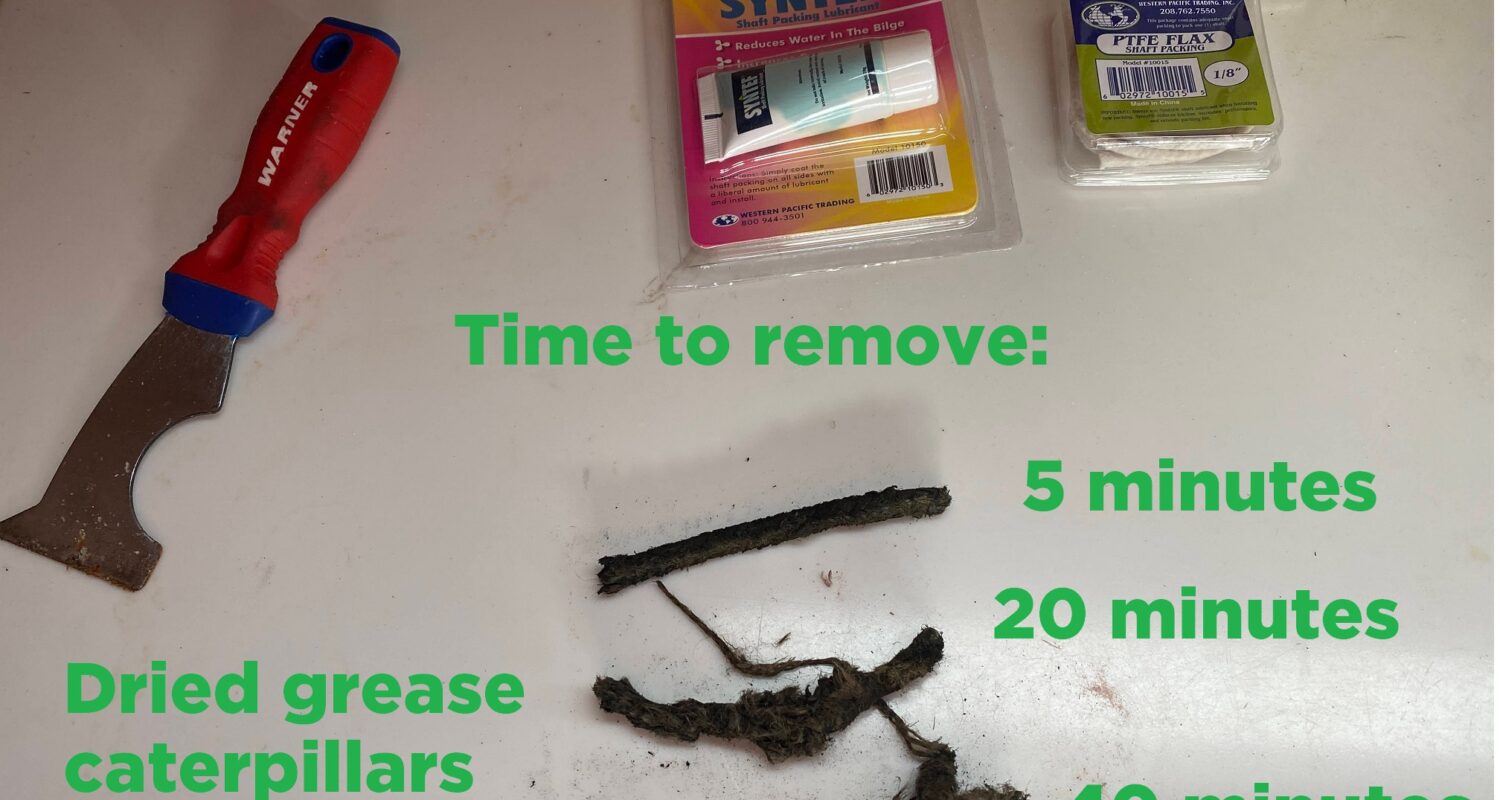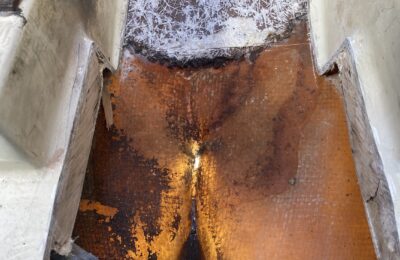Summary: I changed the packing flax material on my propeller stuffing box. It seems that no one had done this job for several years, so the difficult part was getting the packing nuts loosened up to begin with, and then extracting what I believe was the wrong-sized packing material. I am glad I completed this work with my boat out of the water.
Introduction
Changing the packing material in a prop shaft stuffing box should be a simple 4-step task:
- Loosen the packing nut.
- Remove the old packing flax material
- Insert the new lacking flax material
- Re-tighten the packing nut
I did my initial overview/analysis of how my propeller shaft packing gland works in August of 2020. That previous post has a discussion of the anatomy of the contraption and which part does what. I struggled at that point to free the locking nut from the main nut on my stuffing box. Other Ericson owners were wading through the same challenges.
Step 1: Loosen the packing nut
My propeller shaft packing gland started out looking like this, in July 2020:
While the packing was not leaking, it seemed clear that no previous owner had addressed the stuffing box for some time, and I thought I should figure out the process and change the material. I spent some time cleaning the stuffing box (lots of vinegar, some PB Blaster), and eventually once everything was moving it looked like this:
I could unscrew the cap nut on the stuffing box, and the locking nut.
Step 2: Remove the old packing material
I went to work removing the wraps of flax material stuffed up inside of the cap nut. There were three layers of flax and each successive layer took more time to remove. Here’s what the first one looked like.
The inner layers took much longer to remove than the lower one.
For a different task, I had recently purchased an inexpensive endoscopic camera that can connect to my iPhone via BlueTooth. For the $36 purchase price it is amazing technology and could peer into the packing nut where neither my eye nor my phone camera could view.
The arrangement of the stuffing box and transmission is so close that I am left with less than 1” of exposed propeller shaft to work with when the packing nut is slid up.
I manufactured a ‘flax removal tool’ out of a bent framing nail to gouge out the flax. The work was so unpleasant that after finishing the job I ordered a special tool that I hope will make the next time easier.
Harbor Freight also sells inexpensive pick kits that might work well.
In retrospect I am very glad that I did not attempt this job, at least this first time, with the boat in the water. It was extremely challenging to remove the old flax and had water been pouring in the stuffing box, it would only have raised my stress level substantially. The owner’s manual for my boat suggested that I use 1/8th” packing flax, but what I pulled out was much thicker. It could have been ¼” or even 5/16”:
Step 3: Insert new packing material
After consultation from other members of the Ericson Owners forum, it seemed like 3/16” was the best choice to re-pack for my 1” propeller shaft. So that’s what I wound up installing.
The packing flax manufacturer advises the application of “Syn Tef” lubricant to the packing material. I dutifully bought a small tube. It seems like very gummy waterproof grease. About the consistency of chilled butterscotch syrup.
I found it helpful to pre-wind the flax into circles to conform to the shaft. While I imagined the flax would be round like rope or string, it has instead been pre-pressed into a square shape which should help it stick in the packing nut more evenly and retard the water flow. To measure the right length, the hot tip from the internet is to wind the packing around the shaft and then slice it at the overlap point with a sharp razor blade. This worked well for me.
Then I pressed the rings into the nut one by one. Insert a ring, tighten the nut to seat the ring as far into the nut as possible, repeat. I tried to offset the butt joints of the flax material but next time I will mark the nut to help me determine what is where. Without a mark it’s easy to lose track of where the joint in the flax is, as one tightens the nut to seat the ring.
Step 4: Tighten the packing nut back onto the shaft with the flax rings inserted
With the new greasy flax rings, and the mostly clean packing nut, the reassembly process was easy. The boat has yet to be in the water to test the replacement, but even if I have something wrong, making an adjustment will be easy compared to the crusty, corroded condition I inherited.



